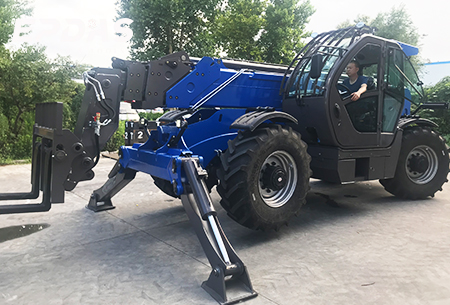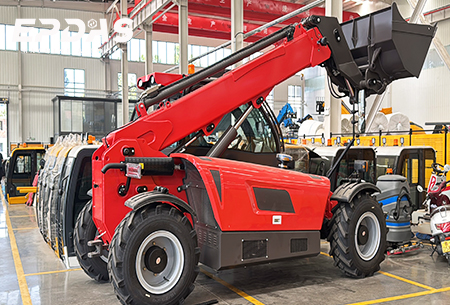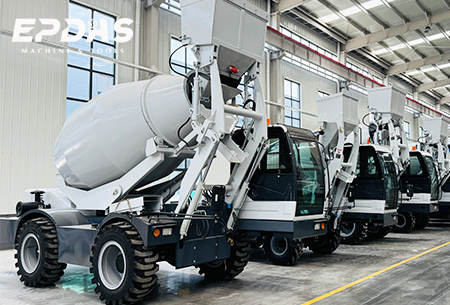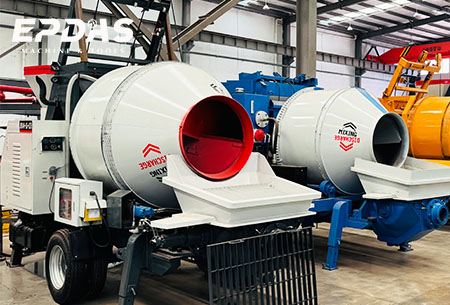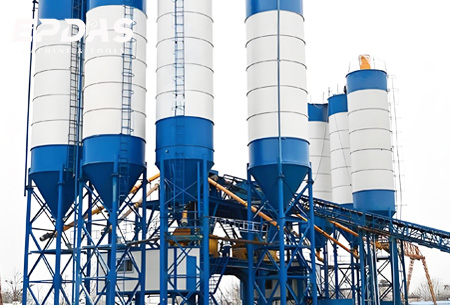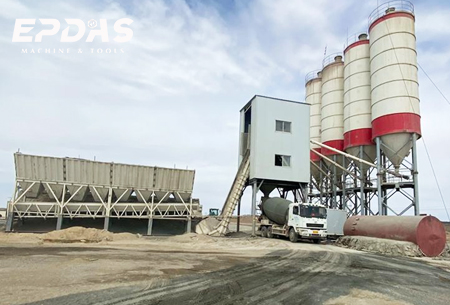Shrinkage Cracks refer to the Cracks That Develop in Concrete as It Dries and Hardens.Concrete Shrinks During the Curing Process Due to the Loss of Water (Drying Shrinkage).
As the Concrete Loses Moisture,It Can Contract,Causing Cracks,Especially if There Is Tension in the Material.
There Are Two Types of Shrinkage Cracks:Plastic Shrinkage Cracks and Drying Shrinkage Cracks.
1.Plastic Shrinkage Cracks:
Appear on the Surface of Concrete While It Is Still in Its Plastic (Fresh) State.Caused by Rapid Moisture Loss Due to Environmental Factors Like High Temperature,Low Humidity, or Wind.
2.Drying Shrinkage Cracks:
Form as the Concrete Hardens and Continues to Lose Moisture over Time.Caused by Uneven Drying,Restraint,or Lack of Expansion Joints.
Causes of Shrinkage Cracks
1.Water-to-Cement Ratio:The More Water That Is Used in the Mix,the More Moisture Will Need to Evaporate During Curing,Which Increases the Potential for Shrinkage.A High Water-to-Cement Ratio Leads to More Shrinkage and,Consequently,a Greater Risk of Cracks.
2.Rapid Drying Conditions:Hot,Dry,or Windy Weather Can Speed Up the Evaporation of Water from the Surface of the Concrete,Leading to Plastic Shrinkage Cracks.Inadequate or Absent Curing Practices Also Exacerbate the Drying Process.
3.Improper Curing:Curing Is the Process of Maintaining the Right Moisture and Temperature Conditions for the Concrete to Cure Properly.If the Concrete Is Allowed to Dry Too Quickly,Drying Shrinkage Cracks Can Occur.Insufficient Curing Can Prevent the Concrete from Gaining Full Strength and Increase the Likelihood of Cracking.
4.Restrained Shrinkage:If Concrete Is Restrained from Shrinking Freely (Such as Being Encased in Formwork or Tightly Adjacent to Other Structures),the Internal Stress May Lead to Cracks as the Concrete Shrinks.
5.Mix Design:The Choice of Materials and the Proportions in the Concrete Mix Can Influence Shrinkage.Concrete Mixes with More Cement,Finer Aggregates,or Additives May Shrink More Than Others.
Shrinkage Cracks in Concrete Are a Natural Result of the Curing and Drying Process,but They Can Be Minimized with Proper Mix Design,Curing,and Environmental Controls.While Small Shrinkage Cracks Are Often Cosmetic and Not Immediately Dangerous,They Can Lead to Durability Issues if Left Unaddressed,Especially if They Become Larger or Allow Moisture to Penetrate the Concrete.
Cracks in Concrete Are a Common but Preventable Issue in Construction.By Understanding the Causes of Cracks and Leveraging Modern Tools Like Boom Pumps,Contractors Can Significantly Improve the Quality and Durability of Their Structures.
Boom Pumps Not Only Enhance the Precision and Efficiency of Concrete Placement but Also Reduce Risks Associated with Improper Handling and Curing.For Projects Aiming to Achieve Durable,Crack-Free Results,Incorporating Boom Pumps into the Construction Process Is a Proven Strategy.
As the Construction Industry Continues to Evolve,Tools Like Boom Pumps Exemplify the Synergy Between Innovation and Quality,Ensuring That Structures Meet Both Functional and Aesthetic Expectations.
When It Comes to Repairing Concrete Cracks,the Use of Self-Loading Mixers Exhibits a Remarkable Synergy. Here’s How:
Immediate Material Availability:Self-Loading Mixers Enable Quick Preparation of Repair Mortars or Concretes On-Site. This Eliminates the Need for Transporting Pre-Mixed Materials,Saving Time and Reducing Logistical Complexities.
Customized Mix Designs:These Mixers Offer the Flexibility to Adjust Mix Proportions According to the Specific Repair Requirements.Whether It’s a High-Strength Mortar for Structural Cracks or a Flexible Grout for Non-Structural Applications,Self-Loading Mixers Can Tailor the Mix to Ensure Optimal Performance.
Enhanced Workability:The Ability to Mix Materials on Demand Ensures That the Repair Material Is Fresh and Has Optimal Workability.This Is Critical for Achieving a Tight,Durable Bond with the Existing Concrete,Minimizing the Risk of Future Cracks.
Cost Efficiency:By Reducing Transportation Costs and Eliminating the Need for Additional Equipment for Mixing and Transporting Materials,Self-Loading Mixers Contribute to Overall Cost Savings.This Economic Advantage Allows for More Frequent and Thorough Crack Inspections and Repairs,Enhancing the Overall Maintenance Budget.
Environmental Benefits:By Minimizing Material Waste and Emissions Associated with Transportation,Self-Loading Mixers Contribute Positively to Environmental Sustainability.This Aligns Well with Modern Construction Practices That Prioritize Green Building Techniques.
The Integration of Boom Pumps into Crack Repair Strategies Exemplifies a Synergistic Approach That Maximizes Both Efficiency and Structural Resilience.The Integration of Self-Loading Mixers into Concrete Crack Repair Strategies Represents a Forward-Thinking Approach That Combines Efficiency,Flexibility,and Cost-Effectiveness.By Enabling On-Site,Customized Mixing of Repair Materials,These Machines Facilitate Timely and Effective Crack Remediation,Thereby Enhancing the Durability and Safety of Concrete Structures.As the Construction Industry Continues to Evolve,Embracing Such Innovative Solutions Will Be Key to Overcoming Existing Challenges and Ensuring the Long-Term Resilience of Our Built Environment.
